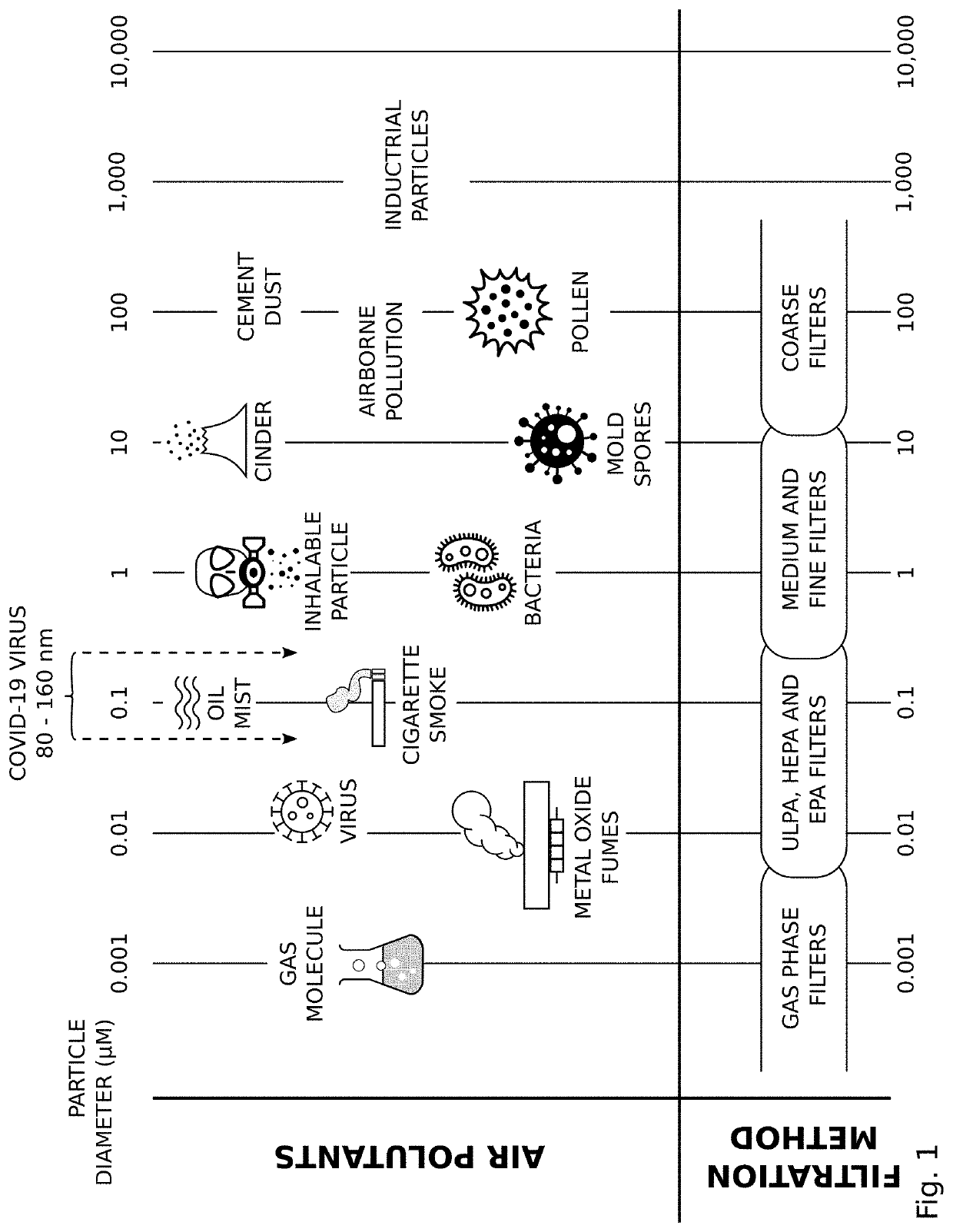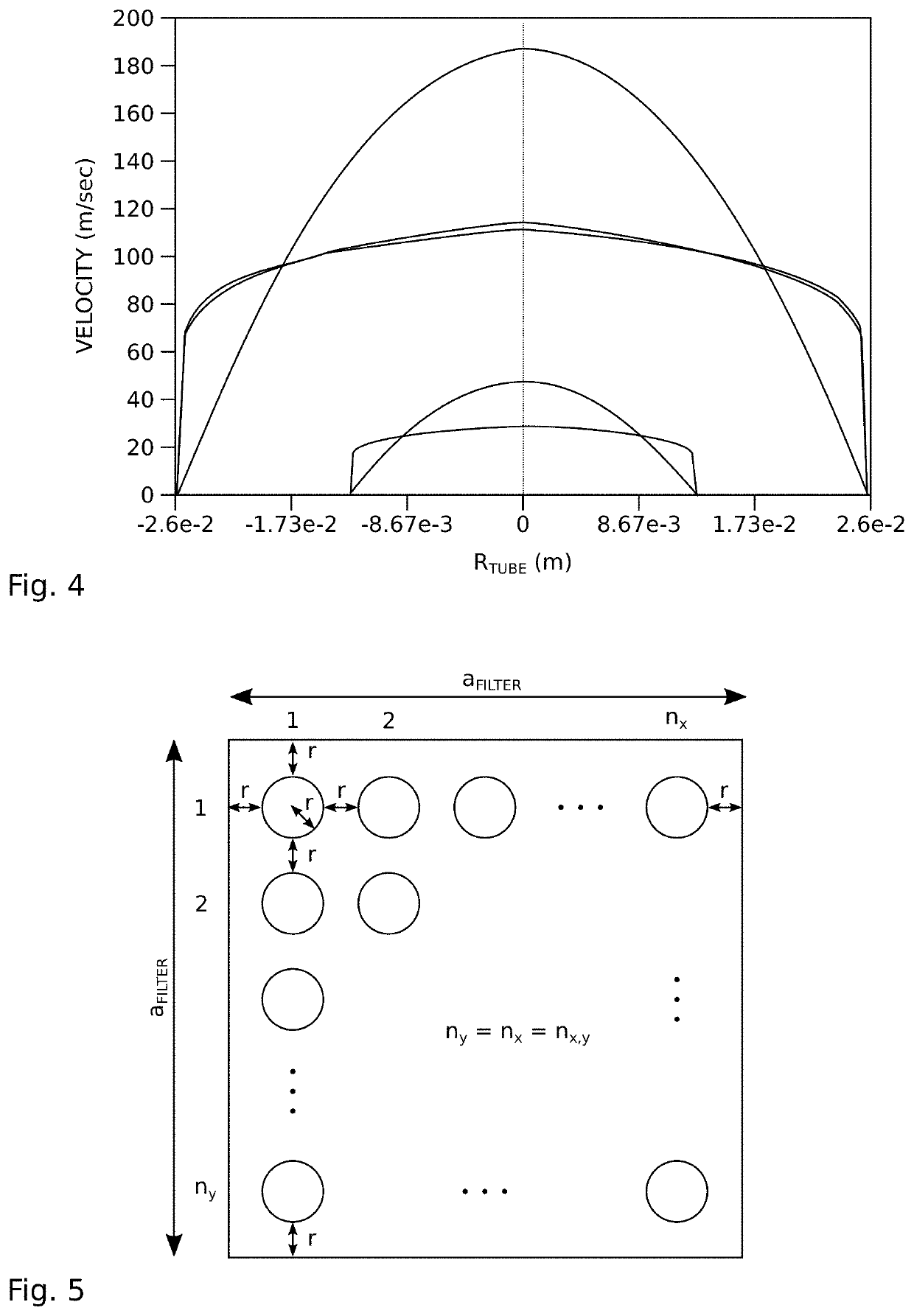This is due to the fact that the fibers that make up the filter are in three-dimensional random arrangement that channels the
airflow in a complicated manner.
Due to the irregularity of the surfaces profile of the face, there will be always irregular gaps left between the face and the
mask where the air can pass through without any filtering during inhale action.
The conclusion is that a
mask having a pore size less than the particulate size that it is designed to filter, can be ineffective if not properly worn.
Another conclusion based on the rudimentary fluid dynamics principles introduced in this work shows that if wearing 2 masks on top of each other does not make it twice as more difficult to breathe, then there is a leak in the
airflow path and is not entirely safe.
Another conclusion made through the application of basic fluid dynamics to a
mask is that good mask filtering cannot be achieved without making it more difficult to breathe through it.
As it is shown mathematically, that makes
breathing difficult, which is the main reason why people don't want to wear masks.
It is also mathematically shown that if the mask is not properly worn or if it does not fit to the face properly, there are leaky areas formed reducing the efficiency of the filtering process very significantly, including filters capable of even filtering
Coronavirus size
particulates.
Since it is impossible to enforce the proper wearing of a mask, the overall effectiveness of even an improved mask would not reduce the spread of the infections.
Due to all the reasons explained above and based on
physics, it seems that achieving this goal is impossible by improving the mask performance and design.
Exact calculations for the air feed
system require complex computational fluid dynamics simulations, which still can be questionable.
In practice, heating or cooling typically limits battery efficiency to no better than 30% efficiency.
As can be seen, having a battery powered
system with heating and cooling functionality becomes unfeasible.
Since the focus here is on a face shield design, the size, weight, and
power consumption of the
irradiation reactor are important design constraints.
Everyday usage of the PAPR is basically out of the question and would not be accepted by many due to its cost, comfort, and bulk.
First, the UV-C
irradiance at every point on the
airflow volume is non-uniform and must be calculated from the arbitrary UV-C source geometry provided.
However, the UV-C intensity is non-uniform along any airflow filament, and it is represented by I(z).
This is a difficult, laborious, and error-prone task for hand calculations, but it is a straightforward task for the UVGI Designer program.
Analytical calculation of the
irradiation integral in general becomes impossible or non-practical.
Therefore,
irradiance calculations based on filament methods close to the cylindrical lamp
radius can be questionable and need to be verified with more accurate methods.
Therefore, making the reactor more than 10-20% longer than the UV-C
discharge lamp does not significantly benefit the UVGI characteristics, and so justify the added length and weight increase.
This condition is the necessary condition that needs to be satisfied, but it does not guarantee that the velocity equivalent of the irradiation integral is greater than the velocity in the velocity profile of the actual flow in the entire cross-section.
Since the UV-C mercury
discharge lamps are geometrically very different as compared to the UV-C LEDs, a direct comparison is difficult.
The problem becomes the
radius rt and the lengths becoming large for a
portable application like in the safe face shield irradiation reactor.
This is physically not possible because of the size of the LEDs, but it can be also built using 12×1 cm segments.
But this statement doesn't give the
dose needed to make a conclusive statement.
In conclusion, terrestrial UV-C levels of solar
radiation are not an effective means of deactivating the Covid-19 virus.
 Login to View More
Login to View More  Login to View More
Login to View More 


